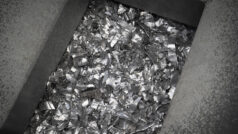In their study „The economics of reuse systems – a study into what makes a financially viable reusable packaging system“, Zero Waste Europe and Searious Business aim to show that reusable systems are not only good for the environment, but also for the economy.
The benefits of reusable systems are, in principle, beyond doubt. However, companies are still wary of the high investment and running costs, especially for SMEs. Recently, there have been repeated attempts by large supermarkets and fast food chains to introduce reusable packaging, but the successes have been modest. These failures are mainly attributed to a lack of consumer acceptance and financial sustainability. However, the study warns against dismissing reusable packaging as a failure based on isolated pilot projects. The system is not yet mature and future success depends on scaling, standardisation and a supporting infrastructure, it says. Building an optimised reuse system will require collaboration between government and industry. Businesses need clarity on critical economic success indicators and return on investment. And policymakers require confirmation that reuse will lead to economic growth.
The study compares the costs and benefits of a high-performance reusable plastic packaging system with an equally efficient single-use plastic scenario. The study aims to analyse the factors that make reusable packaging economically competitive with single-use packaging. The analysis is based on three use cases: food containers, transport packaging and beverage containers. The study finds that single-use plastic is currently the dominant type of packaging for takeaway food containers. However, paper-based or fibre-based packaging is gaining popularity as an alternative. The cost of a disposable plastic unit is calculated at €0.20, while a reusable unit costs €2.50. Additional costs are the pay-per-use fee of €0.18, cleaning and transport costs of €0.10 and platform maintenance costs of €0.02. It is further assumed that 700,000 meals are sold per week. The packaging is used 50 times. The average retention period is 12 days and the return rate is 98 per cent. A €10 fee is charged for non-return. The study points out that with a return rate of 98 per cent, the number of containers in the system will steadily decrease. With a return rate of 90 per cent, the number of reusable containers (starting at 180,000) is close to zero after 40 use cycles. This means a higher pay-per-use fee for users. It is therefore essential to aim for a 100 per cent return rate.
The study highlights that reusable food containers can be more beneficial to users of the system than disposable containers. In the case study, the charge was €0.17 per use, which was cheaper than buying a disposable container. With each additional cycle, money could be saved with the reusable packaging. For transport packaging, the report calculates the price of both disposable and reusable units at €6. The fee charged by the system provider is also €6. Cleaning and transport costs are calculated at €0.5 and €0.63 respectively. The platform maintenance costs for the service provider are €1,500 per year and a further €100,000 for platform development. A total of 2,000 cycles per week are calculated. The report assumes 10 usage cycles, an average rental period of 30 days and a return rate of 98 per cent. There is no difference in direct costs for the users of the system. However, the externalities that are likely to be considered in the future make a significant difference. In addition, the cost of disposing of the disposable big bags was not calculated. This would presumably further increase the economics of reusable big bags. Due to the extensive traceability of the products transported and the controlled environment, it is likely that reusable transport packaging will achieve a high return rate. For beverage containers, the cost of a disposable unit is calculated at €0.05 and a reusable unit at €0.12. The report assumes a pay-per-use fee of €0.08. Cleaning costs are estimated at € 0.05 per unit.
The system in Germany has a deposit return system, which affects the profitability of the system. The purchase cost of disposable bottles is lower than the user charge for value added. On the other hand, the deposit on disposable bottles is more expensive than that on returnable bottles. Despite the additional cleaning costs, the refillable system is economically more advantageous than the disposable system. This is mainly due to the highly decentralised and scaled nature of the system. Uncertainty about material prices and legislative developments can impact the results of the three models. However, there are strong signals that can have a positive impact on the economic benefits of reusable packaging. These include plastic price volatility, resource availability, tariffs, and consumer behaviour. Reusable packaging is increasingly being recognised by consumers as a strong, sustainable packaging solution. If reusable systems can be developed and scaled up, they will outperform single-use systems, they add. This would not only benefit the environment, but also the economy. Market pressure from the supply chain, consumers, and regulators would drive the adoption of more sustainable packaging. Many technological factors influence the success of a reusable system. In addition, many parameters would need to be optimised to ensure a sustainable economic advantage.








[…] Source link […]